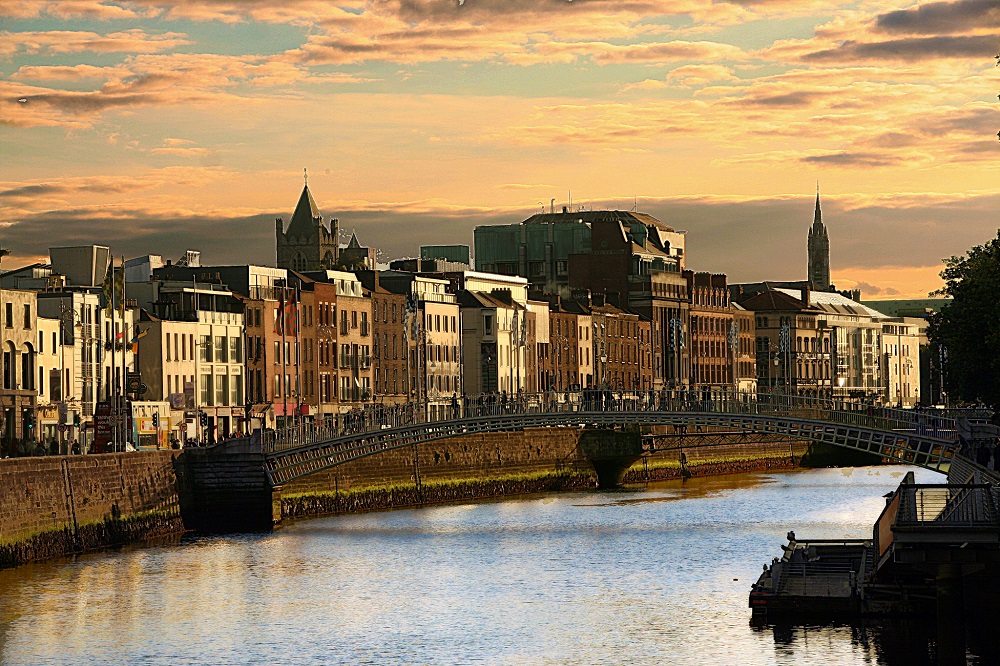The Peninsula
The Irish Peace Process: Insights and Differences

By Junil Kim
In discussions of Korea’s possible reunification, observers often cite the German unification and integration process as a possible model due to its notable similarities with Korea. KEI’s own Senior Director of Congressional Affairs and Trade Troy Stangarone recently wrote a series of articles examining insights from German unification and their possible application to the two Koreas.
The case is less often made for Ireland. December 2nd marked the 16th anniversary of when the British-Irish Good Friday Agreement went into force. The Agreement, which was affirmed by voters in both the Republic of Ireland and Northern Ireland, established North-South institutions, decommissioned weapons held by paramilitary groups, and largely ended violent conflicts. While a North-South divide still exists, the Good Friday Agreement is generally seen as a large positive milestone in Irish reconciliation.
Although the Irish case is not frequently mentioned in discussions of Korean unification, there have been notable proponents in recent years. Both current Irish ambassador to South Korea Aingeal O’Donoghue and her predecessor Eamonn McKee suggested that the Irish peace process with Northern Ireland could serve as a valuable model for Korean reunification. Both envoys were involved in the Irish negotiation process, which slowly developed over the course of several years. Ambassador O’Donoghue noted the value “of sharing lessons or experiences from the Northern Ireland peace process in Korea, though recognizing that the two situations are very different.”
There are several important similarities that make the Irish model useful for possible Korean application. Both regions share a history of colonization by a larger regional power. The Republic of Ireland gained official independence from British rule in 1949, and both Korean nations broke from Japanese colonial administration at the end of World War II in 1945. Ambassador McKee publicly commented on this similarity, stating, “You’ve got two small countries, Ireland and Korea, who are surrounded by big powers and have retained their national identity over many, many centuries despite being buffeted by these powers and the power politics of their regions.”
Both regions were also partitioned in the 20th century. Northern Ireland remains a part of the United Kingdom and the two Koreas were separated by Cold War politics in the aftermath of World War II. Both regions also have a nationalist sentiment that transcends their designated borders. Notable examples of cross-border nationalism include the Irish national teams with athletes from across the island and the two Korean Olympic teams marching together under the Korean unification flag at multiple athletic ceremonies.
Although there are similarities regarding the historical contexts of both Korea and Ireland, there are also significant differences that may make lessons from Ireland difficult to apply to Korea. Unlike the heavily militarized and maintained DMZ that marks the border between the two Koreas, Ireland and Northern Ireland have a relatively open border where residents in both area can travel freely across. This contrasts sharply to the rigorously controlled interactions between North and South Korean citizens, such as the brokered inter-Korean family reunions that occurred this past October.
The Korean security situation is also drastically different from Ireland. Although paramilitary violence has flared up at times within Northern Ireland and in England, North Korea’s military capabilities have far greater security implications for both the Korean peninsula and the wider East Asian region. North Korea’s nuclear weapons development remains the most prominent concern and has regularly drawn the attention and ire of the international community. The amount of present cross-border dialogue is also low compared to North-South interactions in Ireland, which was a crucial factor in the Irish peace process.
Another key difference between the two situations is that the UK and the Republic of Ireland’s membership within the European Union meant that significant EU resources were available to promote the peace process. Furthermore, the U.S. was able to play a crucial role in promoting the Northern Ireland peace process because it was perceived as a neutral party by both the UK and the Republic of Ireland – a situation which emphatically is not the case on the Korean peninsula.
South Korea has demonstrated interest in learning lessons from the Irish peace process. In early 2014, the Korean Ministry of Foreign Affairs formed the Peninsula Club, an organization made of 21 foreign ambassadors to both Koreas. The group, which Ambassador O’Donoghue is also a part of, is meant to function as a networking platform to build international support for Korean reunification. In a more explicit show of South Korean interest, a delegation of officials from the Republic of Ireland and Northern Ireland visited Seoul in 2012 to discuss their peace process with South Korean government leaders.
Despite significant differences between Ireland and Korea, the Irish peace process provides an optimistic example of reconciliation. Important similarities between the two regions make the Irish model worth examining for possible application to Korean reunification.
Junil Kim is an intern at the Korea Economic Institute of America. The views expressed here are the author’s alone.
Photo from laura photo’s photostream on flickr Creative Commons.
